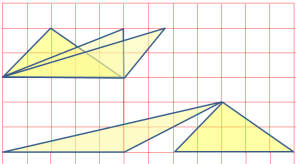I think the following entry from WikiPilipinas needs revising. “Learning of facts”? Check also the last statement.
“Teaching for understanding” is the main tenet of UbD. In this framework, course design, teacher and student attitudes, and the classroom learning environment are factors not just in the learning of facts but also in the attainment of an “understanding” of those facts, such as the application of these facts in the context of the real world or the development of an individual’s insight regarding these facts. This understanding is reached through the formulation of a “big idea”– a central idea that holds all the facts together and makes these connected facts worth knowing. After getting to the “big idea,” students can proceed to an “understanding” or to answer an “essential question” beyond the lessons taught.
One of my initial concerns about UbD in my previous post is about not checking first if the bandwagon we jumped in to will run in our roads although I received a comment that said the DepEd did pilot it and are confident that it can. The results of the pilot I believe are not for public consumption. We just have to believe their word for it. But with this post at WikiPilipinas, I don’t know if it is clear to us what the wagon is. Here’s the next paragraph:
Through a coherent curriculum design and distinctions between “big ideas” and “essential questions,” the students should be able to describe the goals and performance requirements of the class. To facilitate student understanding, teachers must explain the “big ideas” and “essential questions” as well as the requirements and evaluative criteria at the start of the class. The classroom environment should also encourage students to work hard to understand the “big ideas” by having an atmosphere of respect for every student idea, including concrete manifestations such as displaying excellent examples of student work.
But I love the description of traditional method of constructing the curricula in the following paragraph. Very honest. But I can’t agree about the analogy with Polya’s.
The UbD concept of “teaching for understanding” is best exemplified by the concept of backward design, wherein curricula are based on a desired result–an “understanding” or a “big idea”–rather than the traditional method of constructing the curricula, focusing on the “facts” and hoping that an “understanding” will follow. Backward design as a problem-solving strategy can even be traced back to the ancient Greeks. In his book “How to Solve It” (1945), the Hungarian mathematician George Polya noted that the Greeks used the strategy of “thinking backward” by knowing what you want as a solution in order to solve a problem.
If I remember right, G. Polya wrote “look back” as the last step for solving a problem. It means you reflect on your solution and answer in relation to the problem. But wait, there is a problem solving strategy called “working backwards” which is probably what is meant here but as an analogy to backward design? Uhmmm …
Oh, by the way, “backward design” is a problem solving strategy?
Not that I’m happy we’re adapting Understanding by Design but who cares if I’m happy with it or not. There isn’t anything I can do in that department but just to help now to make sure we make the most of it. It is is a multimillion peso project. That’s our taxes. The one in WikiPilipinas is by far the only resource in the net for UbD Philippines. If you happen to know other related sites, please share.
Here’s one research about UbD in Singapore. Here’s my other UbD related post








